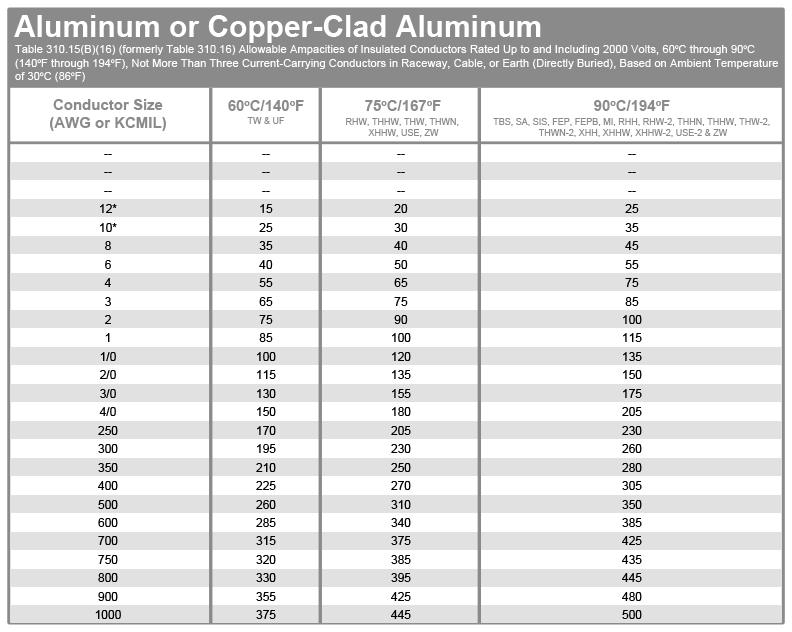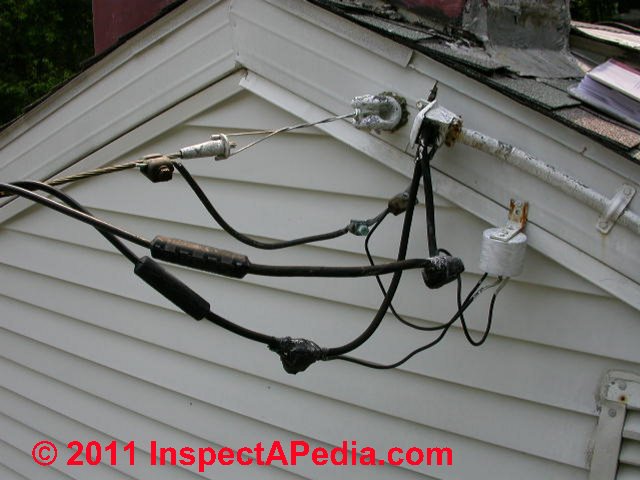
This is following NEC’s recommendation to increase wire size by 20% per 100 ft length for a 200 amp wire size.Ĭopper and Aluminum Ampacity Ratings: Wire Gauge
200 amp service wire copper or aluminum code#
The National Electrical Code (NEC) provides guidelines for appropriate wire gauge sizes based on ampacity.įor instance, a 200 amp wire running 200 feet should be 500 kcmil (thousand circular mils) copper or 1000 kcmil aluminum. The maximum current that a wire can safely handle depends on the wire’s gauge, material, and temperature rating.

Amperage and Maximum CurrentĪmperage, also known as current, refers to the flow of electrical charge in a circuit. Hence, 2-gauge wire can carry more current than a 4-gauge wire. This is significant, as increased resistance can cause a wire to overheat and potentially create fire hazards.įor example, a 4-gauge wire has an approximate diameter of 0.2043 inches (0.518 cm), while a 2-gauge wire has an approximate diameter of 0.2576 inches (0.654 cm) 1. Larger diameter wires have more cross-sectional area, which allows more electrical current to flow with lower resistance. The diameter and cross-sectional area of a wire play a crucial role in determining its electrical capacity. It is important to choose the correct wire gauge according to the current it will carry to ensure safety and efficiency in electrical systems. Larger diameter wires can carry more electrical current without overheating. The lower the AWG number, the larger the wire diameter, and vice versa. Understanding Wire Gauge and Ampacity American Wire Gauge (AWG)Īmerican Wire Gauge (AWG) is a standard used to determine the diameter of round electrical conductors, such as copper and aluminum wires.

Qualified Electrician and Inspection Requirements.Comparison with Pure Copper and Aluminum Wires.Pros and Cons of Copper-Clad Aluminum Wire.Patina, Oxidation, and Corrosion Resistance.Properties and Comparison of Copper and Aluminum Wires.Distance and Voltage Drop Considerations.Choosing the Correct Wire Size for 200 Amp Service.By understanding these factors andreferencing resources like the National Electrical Code, you can ensure that your electrical installations remain safe, efficient, and reliable in the long run. wire gauge size chartĬhoosing the right wire size for a 200 amp electrical service isn’t just about the material and gauge it also involves proper insulation, conduit size, and following applicable codes and guidelines. For instance, a 200 amp wire running 200 feet might require 500 kcmil copper or 1000 kcmil aluminum wire size, taking into account a 20% increase in wire size per 100 ft length as recommended by the National Electrical Code. Depending on the length of the wire run, you may need to increase the size to account for potential voltage drops. For a 200 amp service, it’s recommended to use a #2/0 copper wire or #4/0 aluminum or copper-clad aluminum wire. Copper, aluminum, and copper-clad aluminum are commonly used for electrical wiring. By understanding the factors influencing wire size selection, such as voltage drop and the distance between the service panel and the point of use, you can make informed decisions that lead to a reliable and hazard-free electrical installation.ĭifferent materials have varying levels of conductivity and ampacity, which is the current-carrying capacity of a wire.


Wire size plays a key role in determining the carrying capacity of electrical circuits, affecting not only the performance but also the potential hazards associated with under- or overloading electrical systems. This means that at no cost to you, we may receive a small commission for made purchases.ĭetermining the correct wire size for a 200 amp service is crucial for ensuring the efficiency and safety of any residential or commercial electrical system. Note: This post may contain affiliate links.


 0 kommentar(er)
0 kommentar(er)
